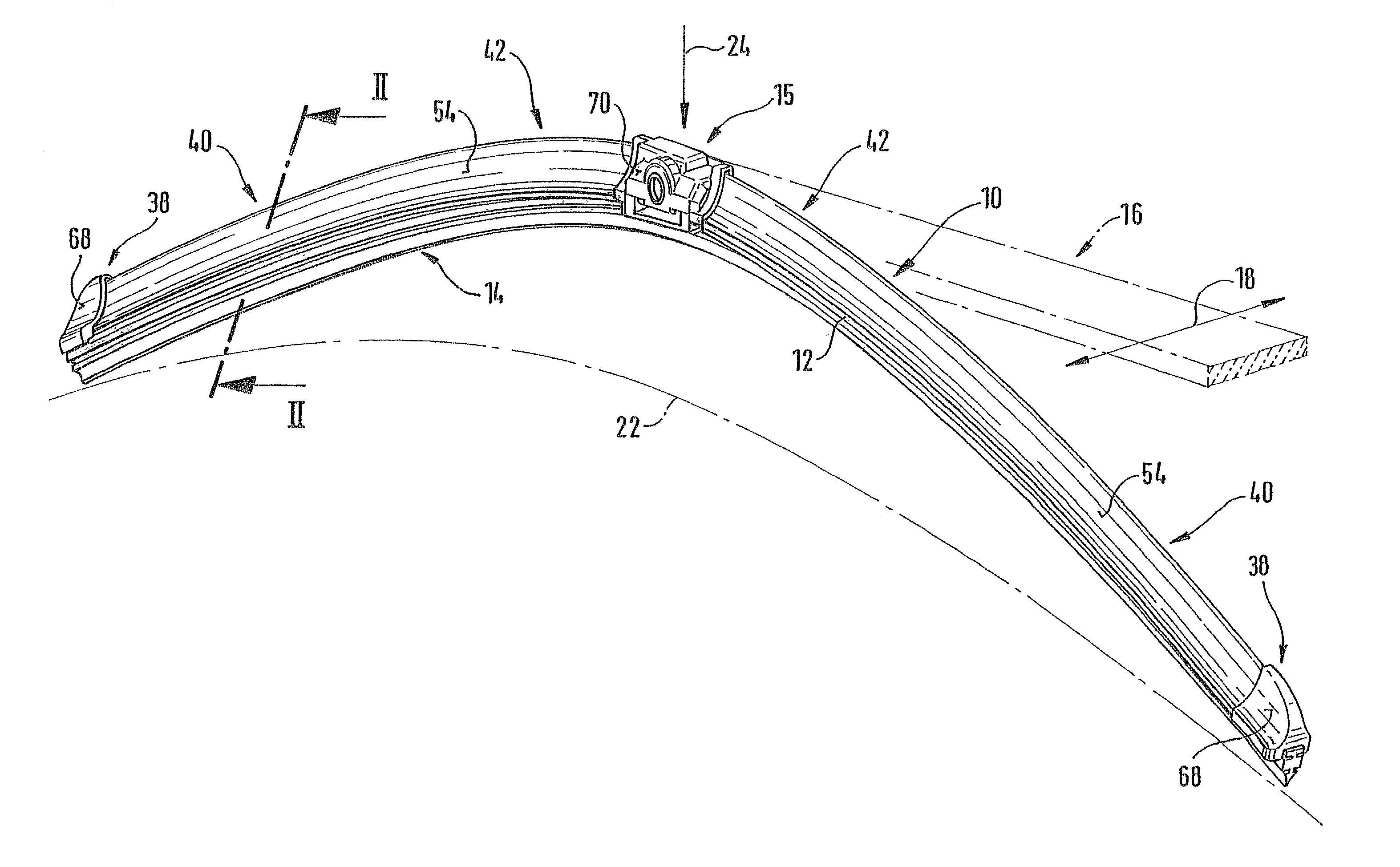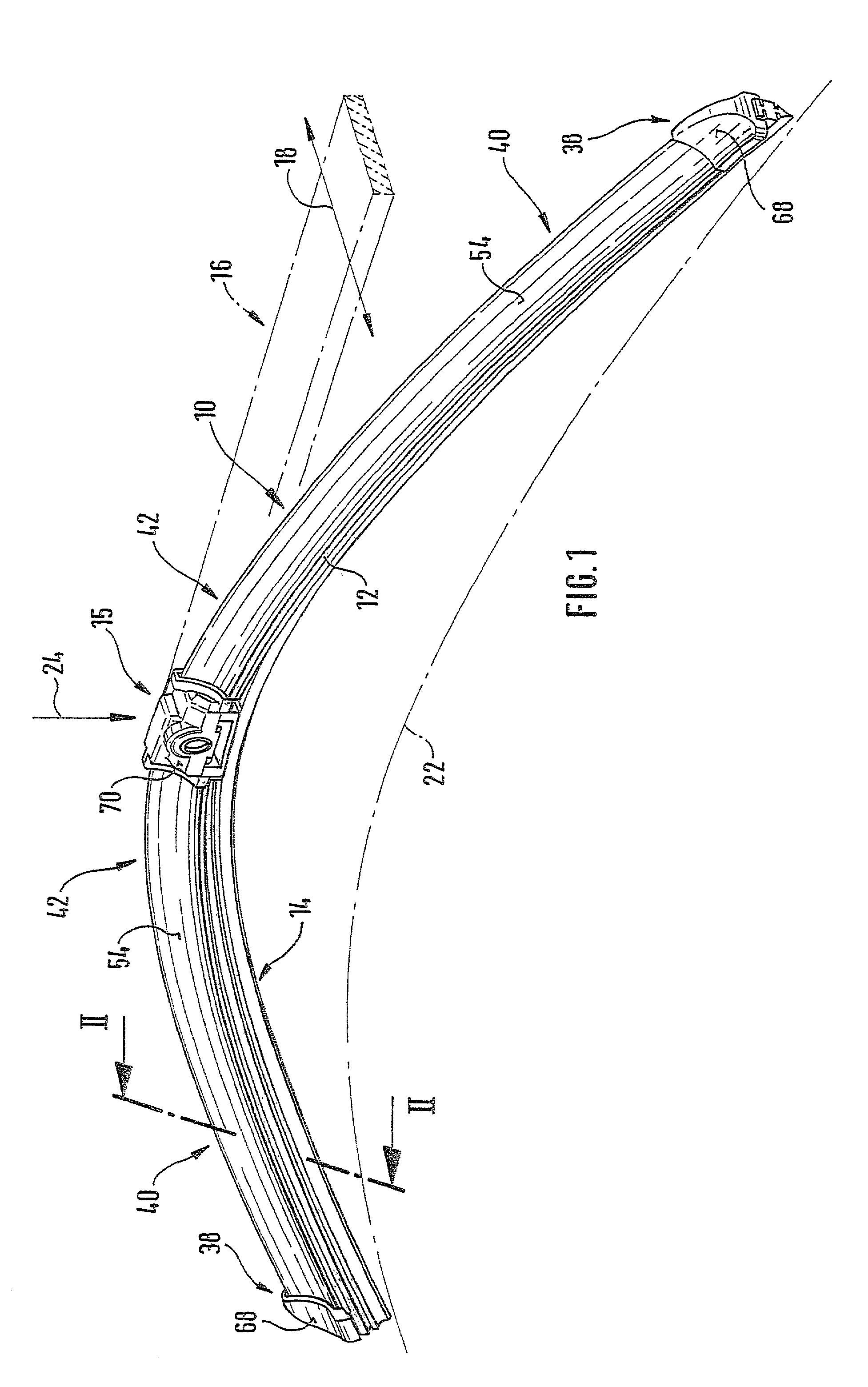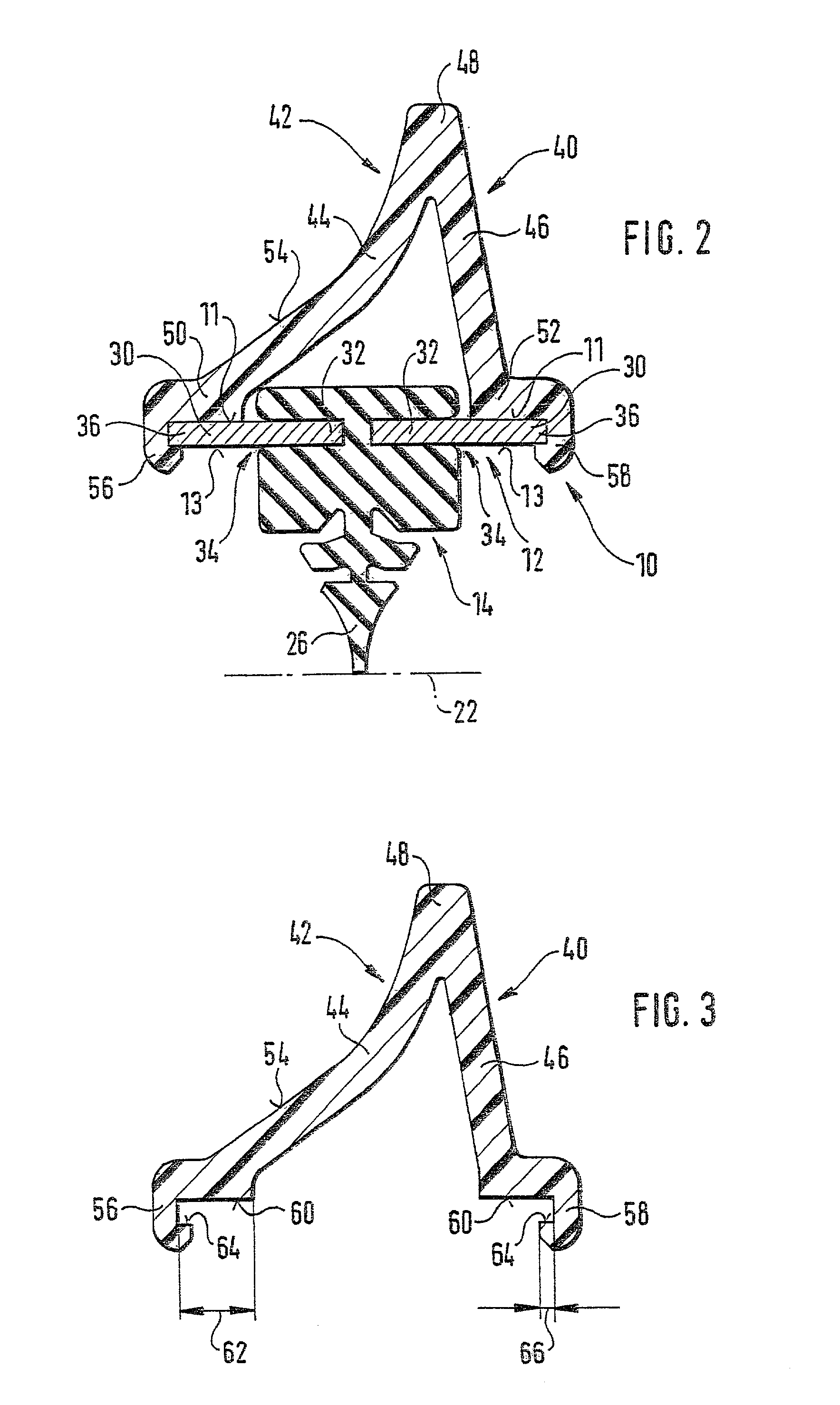Wiper blade for cleaning screens in particular on motor vehicles
a technology for cleaning screens and motor vehicles, applied in vehicle cleaning, domestic applications, vehicle maintenance, etc., can solve the problems of increasing the weight of the wiper blade in an undesirable fashion, requiring a relatively large amount of material, and the use of a large amount of material
- Summary
- Abstract
- Description
- Claims
- Application Information
AI Technical Summary
Benefits of technology
Problems solved by technology
Method used
Image
Examples
Embodiment Construction
[0031] A wiper blade 10 shown in FIG. 1 has a band-like, elongated, spring-elastic support element 12 (FIGS. 1 and 2), whose lower band side 13 oriented toward the window has an elongated, rubber-elastic wiper strip 14 attached to it so that the longitudinal axes of these two parts are parallel. On the upper band side 11 of the support element 12, which is oriented away from the window, which support element is also referred to as a spring strip, the middle section of the support element is provided with the wiper blade part 15 of a connecting device, with the aid of which the wiper blade 10 can be detachably connected in an articulating fashion to a wiper arm 16 indicated with dot-and-dash lines in FIG. 1. The wiper arm 16, which is driven to reciprocate in the direction of a double arrow 18 in FIG. 1, is loaded in the direction of an arrow 24 toward the window to be wiped, for example the windshield of a motor vehicle, whose surface is indicated with a dot-and-dash line 22 in FIG....
PUM
 Login to View More
Login to View More Abstract
Description
Claims
Application Information
 Login to View More
Login to View More - R&D
- Intellectual Property
- Life Sciences
- Materials
- Tech Scout
- Unparalleled Data Quality
- Higher Quality Content
- 60% Fewer Hallucinations
Browse by: Latest US Patents, China's latest patents, Technical Efficacy Thesaurus, Application Domain, Technology Topic, Popular Technical Reports.
© 2025 PatSnap. All rights reserved.Legal|Privacy policy|Modern Slavery Act Transparency Statement|Sitemap|About US| Contact US: help@patsnap.com



